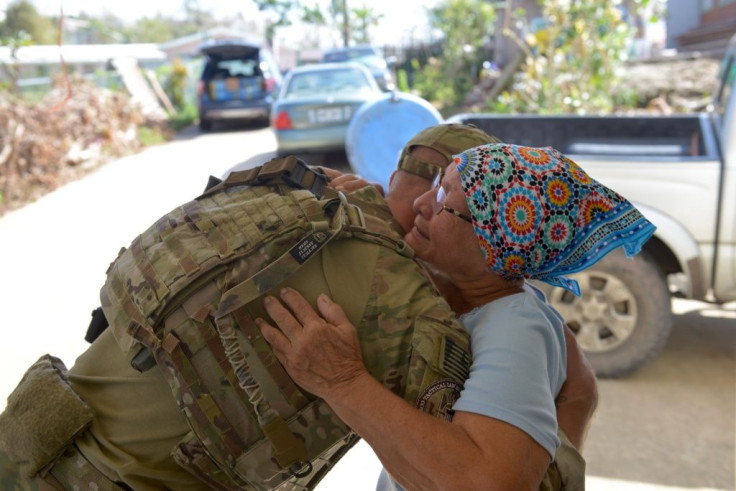Puerto Rick News: FEMA Deletes Data People Without Water, Electricity

The people of Puerto Rico, for the most part, have been living without electricity and water for weeks following the direct hit the island took from Hurricane Maria. Exact data on the rates of outages had been available on the Federal Emergency Management Agency’s website for anyone to view but as of Thursday some of the information disappeared from the site, The Washington Post reported.
A spokesperson for FEMA told the Post that these statistics are still available on the website Status.pr, which is in Spanish, and that they had been made available at news conferences but didn’t give the Post a reason for their removal from the FEMA website. The information was removed from the site just two days after President Donald Trump visited the island. Trump has praised the response in Puerto Rico and said that the recovery efforts are going well.
The responses from FEMA and Trump have been widely criticized by the leaders in Puerto Rico. During his visit Trump said that the situation in Puerto Rico wasn’t a “real catastrophe” like Hurricane Katrina was. He also said the disaster had thrown the budget “out of whack."
Data on some conditions on the island support Trump’s assertion that the island is doing well following the storm were still available on FEMA’s site. FEMA’s page on Puerto Rico said that as of 10 a.m. EDT Thursday, 65 percent of grocery stores were open, 64 percent of wastewater treatment plants were up and running, 92 percent of hospitals were open and other metrics. But specifically, rates of electric outages and clean water availability were gone.
The website Status.pr did have these metrics though. It showed that as of Friday, the Autoridad de Energía Eléctrica or AEE, Puerto Rico’s energy provider was only at 10.7 percent of its capacity. Meaning the majority of people in Puerto Rico were still without electricity. The water situation was a little better but varied greatly by region but these statistics were still missing from FEMA’s site. On average 55.5 percent of clean water from the Autoridad de Acueductos y Alcantarillados, or AAA, had been restored Friday, according to Status.pr.
The site has changed in a few other ways as well. Not only has some of the information about the relief efforts been removed, infographics were replaced with photos of relief efforts, Gizmodo reported. Archives of the page show that the section “Water/Wastewater Impacts” used to have information about the clean water supply but now it only shows the updates on the water treatment facilities.
© Copyright IBTimes 2024. All rights reserved.




















